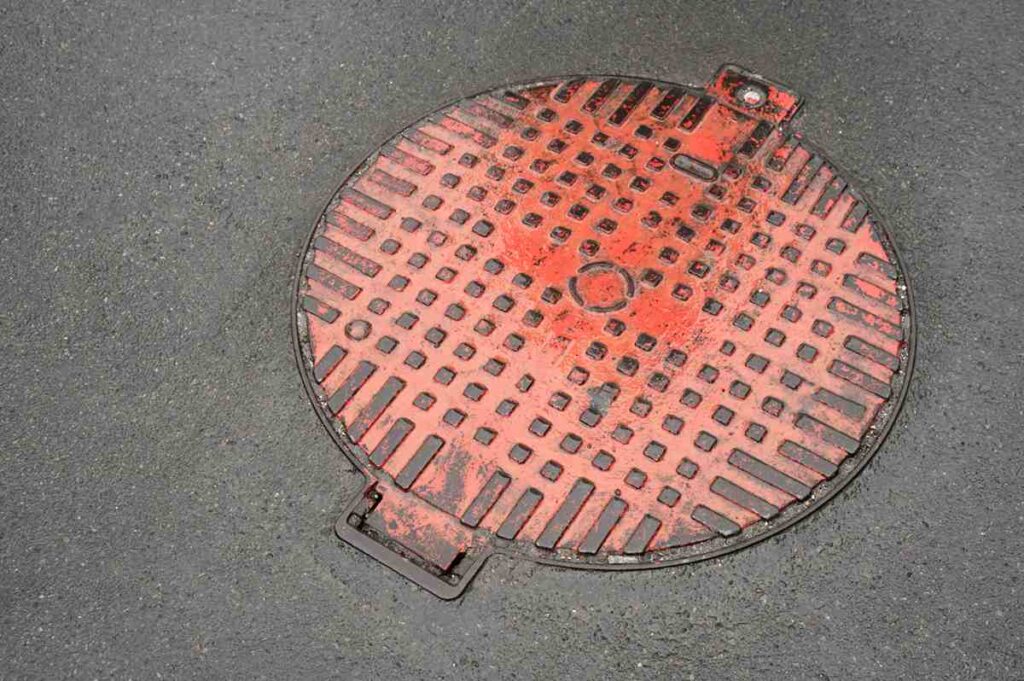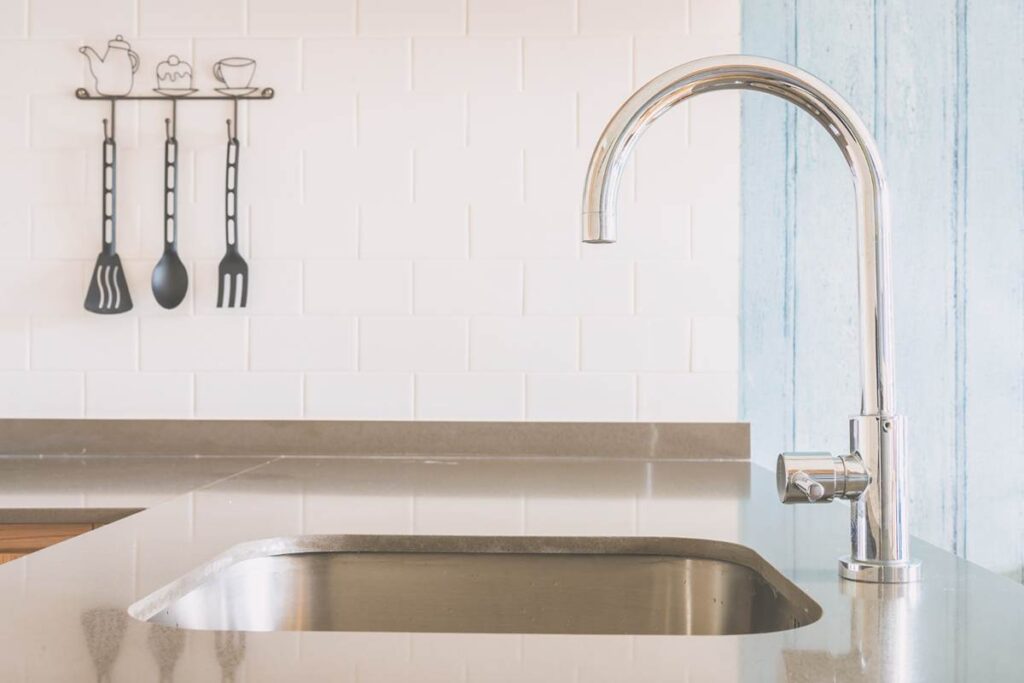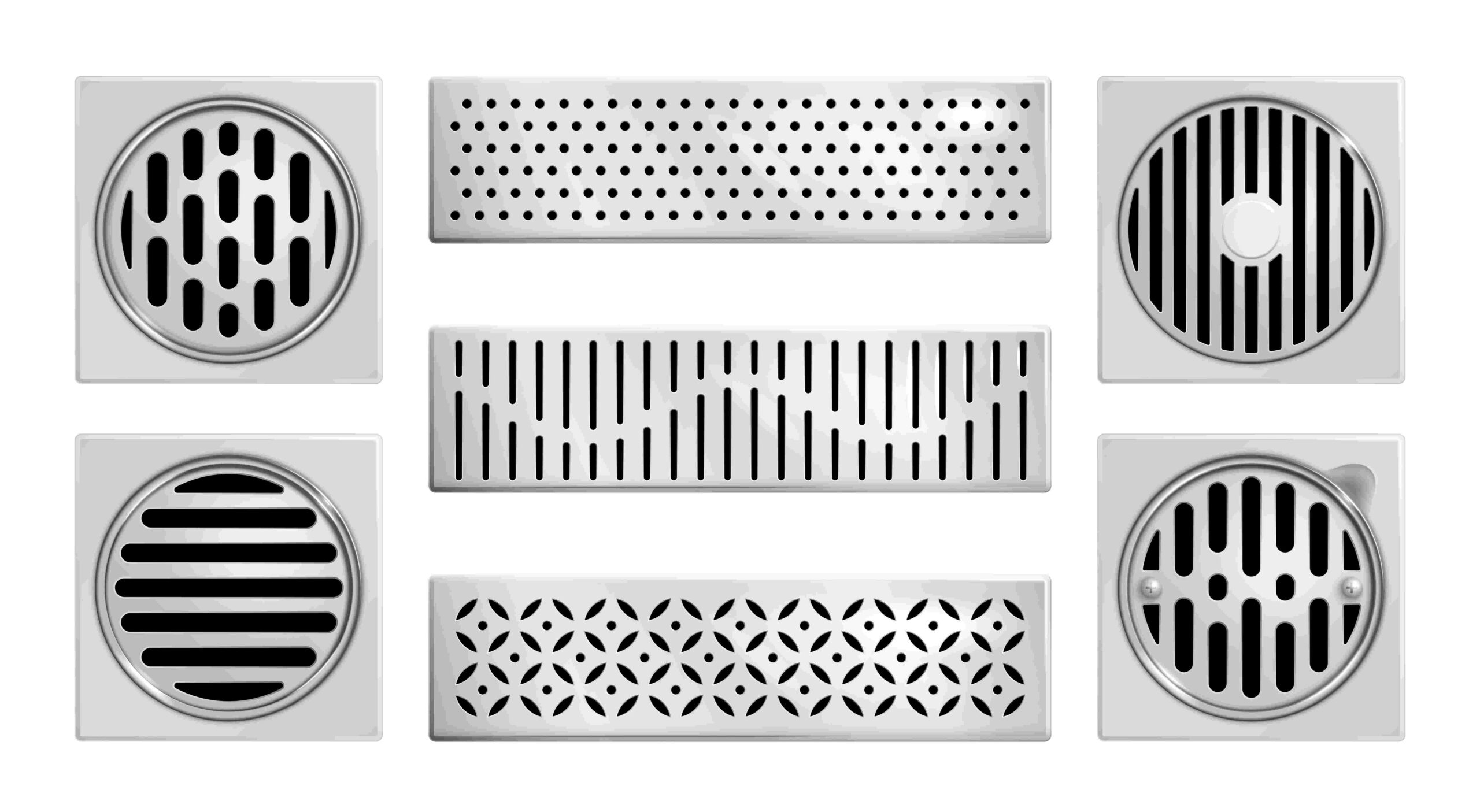When it comes to water drainage in homes or commercial spaces, understanding the difference between a floor drain vs floor sink is essential. While both are designed to handle water, they serve different purposes and are used in different settings. A floor drain is often found in bathrooms and basements to remove excess water, while a floor sink is typically used in kitchens or industrial spaces for heavy-duty tasks. Many people mistakenly confuse the two, but knowing their differences can help you make the right choice for your needs. Let’s dive into how these two solutions compare!
What is a Floor Drain?
A floor drain is a simple yet essential plumbing feature designed to remove excess water from the floor. It’s essentially a hole in the ground that directs water into the drainage system. These drains are commonly found in spaces where water tends to accumulate, such as bathrooms, laundry rooms, and basements. The primary purpose of a floor drain is to prevent water from pooling and causing damage to the floor or walls.
Where It’s Used
Floor drains are most effective in smooth, flat surfaces such as bathroom floors, kitchens, and garages. In these areas, water runoff from cleaning, showers, or washing machines can easily be directed away, preventing flooding or water damage. Floor drains help keep these spaces dry, hygienic, and safe by efficiently channeling water away from the floor and into the plumbing system. Their simple design makes them ideal for everyday water drainage needs.
What is a Floor Sink?
A floor sink is a deeper basin or “mini-sink” installed directly into the floor. Unlike a floor drain, which is shallow and designed for surface water, a floor sink is built to capture larger amounts of wastewater. It’s often used in areas where heavy-duty water disposal is required, like when water is discharged from appliances such as dishwashers, soda machines, or large food preparation equipment. The deeper basin allows for the collection of dirty water and prevents it from overflowing, ensuring proper waste management.
Where It’s Used
Floor sinks are most commonly found in commercial kitchens, food factories, and grocery stores. These spaces require efficient wastewater removal due to the high volume of water and debris generated by appliances. Typically, a floor sink is covered with a grate or dome to prevent large objects from falling in and to maintain hygiene. Its robust design makes it an ideal solution for areas where water needs to be collected from multiple sources, such as equipment and food prep areas.
Floor Drain vs Floor Sink: Main Differences

Design & Depth
One of the main differences between a floor drain vs floor sink is their design and depth.
- Floor drains are typically flat and shallow, with a small opening that allows water to flow through. They are designed to handle minimal water volume and are ideal for areas where water naturally collects on the surface, like in bathrooms or kitchens.
- Floor sinks, on the other hand, are deeper and bowl-shaped. This design allows them to capture larger amounts of water, making them perfect for spaces that need to handle waste from equipment like dishwashers or soda machines.
Use Case
Another key difference is in their use case:
- Floor drains are primarily used for general water runoff, such as water from showers, sinks, or floor cleaning. They are suitable for residential and smaller commercial spaces.
- Floor sinks are specifically designed for direct pipe discharge from appliances, making them ideal for environments like commercial kitchens, food factories, or areas where large amounts of wastewater need to be removed quickly and efficiently.
Bathroom Floor Drain vs Floor Sink
In most bathrooms, floor drains are the go-to option because they are well-suited for handling water runoff from showers and floors. Floor sinks, however, are generally not suitable for standard bathroom use. Their deeper design and larger capacity make them better suited for commercial or industrial applications where significant water discharge occurs.
Quick Comparison Table
| Feature | Floor Drain | Floor Sink |
| Depth | Shallow | Deep bowl |
| Used In | Homes, bathrooms | Restaurants, industries |
| Water Source | Surface water runoff | Appliance discharge |
| Cover Type | Grate | Dome or splash guard |
| Cleaning Needed | Less | More frequent |
Floor Drain vs Floor Sink Size Guide

Floor Drains Size Range
When choosing between a floor drain vs floor sink, size is an important factor to consider. Floor drains typically come in diameters ranging from 2 to 6 inches. The smaller size works well for areas with light water runoff, like bathrooms, laundry rooms, and kitchens. These drains are designed to handle small amounts of water without taking up too much space in your floor design.
Floor Sinks Size Range
On the other hand, floor sinks usually come in larger sizes, typically between 8 to 12 inches in diameter. These larger, deeper basins are designed to capture and hold more water, especially from equipment like dishwashers, food prep machinery, or industrial sinks. The increased depth allows for more wastewater storage, making them suitable for commercial or heavy-use environments.
Choosing the Right Size
When deciding between a floor drain vs floor sink, it’s crucial to choose the right size based on both water volume and the available space.
- If you have a high-volume space, like a commercial kitchen or food factory, go with a larger floor sink.
- For standard bathroom or household use, a smaller floor drain will work just fine.
Floor Sink Installation Details
When installing a floor sink, there are several key components that are essential for proper functionality. A trap primer is necessary to prevent odors from entering the room by keeping the trap filled with water. Additionally, a dome strainer or splash guard is installed to prevent large debris from entering the floor sink. Lastly, the deep body of the sink is crucial for capturing large amounts of wastewater and ensuring that the sink can handle high-volume discharges.
Installed Where Gravity-Fed Waste from Equipment Flows Down
Floor sinks are typically installed in areas where gravity-fed waste from equipment like dishwashers, industrial sinks, or food prep machines is directed toward the sink. This allows the floor sink to efficiently capture and manage large amounts of wastewater that flow downward from these appliances. The installation of a floor sink ensures that the space remains clean and dry, even in high-use environments like commercial kitchens or factories.
Floor Should Slope Slightly Toward the Sink
Proper installation also requires that the floor slopes slightly toward the sink. This ensures that water naturally flows in the direction of the floor sink, helping to prevent pooling or standing water. The slight slope should be carefully measured to ensure optimal water drainage, promoting hygiene and preventing water damage in the surrounding area.
Choosing the Right Option for Your Space
Residential Use
When it comes to residential use, choosing the right drainage option is key to ensuring efficiency and cleanliness. In areas like bathrooms, laundry rooms, and balconies, a floor drain is typically the best choice. Floor drains are designed to handle general water runoff and can easily manage the light water flow found in these spaces. Their shallow design ensures that they fit well into homes without taking up too much space while providing an effective drainage solution.
Commercial Use
For commercial use, especially in spaces where food handling or dishwashing takes place, a floor sink is the better option. In environments such as commercial kitchens, food factories, or grocery stores, a floor sink is necessary to manage large amounts of wastewater that come from equipment like dishwashers, sinks, or food prep machines. These sinks are designed to handle high-volume waste and help maintain hygiene in environments that require more robust drainage solutions.
Think About Maintenance
Maintenance is an important factor to consider when choosing between a floor drain vs floor sink:
- Floor sinks tend to collect grease, food bits, and other debris, which means they require more frequent cleaning and maintenance. Keeping them clear of buildup is essential to ensure optimal performance and prevent clogs.
- Floor drains, however, are simpler to maintain. Since they handle smaller amounts of water and are typically used in less demanding environments, they don’t require as much upkeep, making them a low-maintenance option for residential spaces.
What Most People Get Wrong

Myth-busting: Floor Sinks Are NOT the Same as Floor Drains
One common misconception is that floor sinks and floor drains are the same. However, they serve very different purposes. Floor drains are shallow and designed for general water runoff, typically found in residential settings such as bathrooms and kitchens. On the other hand, floor sinks are deeper and specifically designed to handle wastewater from heavy-duty equipment like dishwashers or food prep machinery. Understanding this difference ensures you’re choosing the right option for your needs.
Missed Point: Floor Sinks Need Splash Protection (Like Dome Strainers)
A floor sink needs more protection than just a standard cover. Many people overlook the importance of splash protection in floor sinks, like a dome strainer or splash guard. These are essential to prevent debris and grease from entering the system, which could lead to clogs or other issues. Make sure to always install the necessary protection to ensure the sink’s long-term efficiency and cleanliness.
Extra Tip: Local Plumbing Codes Matter—Always Check with Your Local Regulations
When installing either a floor drain vs floor sink, it’s crucial to check with your local plumbing codes. Different regions may have specific regulations regarding installation, size, and materials. Ignoring these codes can lead to compliance issues and potentially costly rework. Always verify the local building codes before starting your installation process to avoid any legal or functional problems later on.
Hygiene Note: Floor Sinks Help Reduce Contamination Risks in Food Areas
Another point often missed by competitors is that floor sinks are essential in reducing contamination risks in food-handling environments. In spaces like commercial kitchens, where food safety is critical, floor sinks play a significant role in preventing bacterial buildup. By managing the wastewater from dishwashers and other equipment properly, they help ensure that food areas remain sanitary and compliant with health regulations.
Helpful Advice: Use Odor Traps and Strainers for Both Types
For both floor drains and floor sinks, it’s important to use odor traps and strainers. These components help prevent foul odors from entering your living or working space and keep drains and sinks free from debris. Incorporating these simple yet effective features can make a big difference in the long-term efficiency and hygiene of both systems.
FAQS
Is a floor sink the same as a floor drain?
No, a floor sink is not the same as a floor drain. A floor sink is a deeper basin designed for handling large amounts of wastewater, typically from commercial appliances like dishwashers. In contrast, a floor drain is shallow, used for general water runoff in residential areas like bathrooms and kitchens.
What is a floor drain?
A floor drain is a plumbing fixture installed in the floor that helps remove water runoff from flat surfaces. It is typically used in residential spaces, such as bathrooms and laundry rooms, to prevent water from pooling and causing damage.
What is the difference between floor drain and floor trap?
A floor drain is designed to drain surface water, whereas a floor trap has a specialized function of catching debris and preventing odors from coming back through the plumbing system. Floor traps are often used in commercial kitchens and areas where debris is common.
What is the difference between a floor drain and an area drain?
A floor drain is used to remove water from specific locations such as bathrooms or laundry rooms, whereas an area drain covers larger outdoor areas like patios, gardens, or parking lots. Area drains handle more volume and larger water flows.
Do floor drains hold water?
Floor drains do not typically hold water. They are designed to direct water flow to plumbing systems, preventing water from accumulating. However, some floor drains have a small amount of water in the trap to prevent sewer gases from escaping into your space.
How do you maintain a floor drain?
To maintain a floor drain, regularly remove any debris and clean the trap. Flush with water occasionally to ensure it stays clear and free of clogs. Regular maintenance prevents blockages and keeps the drain functioning smoothly.
Can you install a floor sink in a residential setting?
While a floor sink is mainly used in commercial environments, you can install one in a residential setting if you need to handle large amounts of water from appliances like dishwashers or washing machines. However, it is not necessary for most homes.
Are floor sinks difficult to install?
Floor sinks are more complex to install than floor drains, as they require additional components like trap primers and dome strainers. It’s recommended to consult a professional plumber to ensure proper installation.
Final Thoughts
When deciding between a floor drain vs floor sink, it’s important to choose the right option based on your specific needs. Floor drains are the best choice for home water drainage, as they handle light water runoff and are ideal for areas like bathrooms, laundry rooms, and basements. They provide an effective and low-maintenance solution for general water flow.
On the other hand, floor sinks are designed for heavy-duty, commercial use. They are perfect for spaces like commercial kitchens, food factories, and grocery stores, where there is a need to manage large amounts of wastewater from appliances like dishwashers and soda machines. These sinks provide more depth and capacity, making them better equipped for demanding environments.










